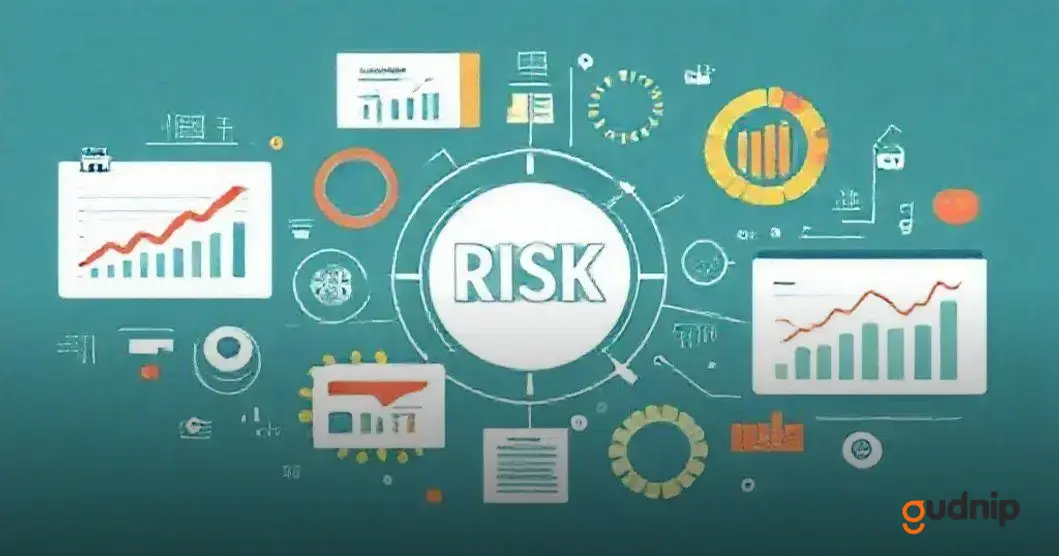How to Diversify Portfolio With Low Risk is something many investors search for when they want steady growth without unnecessary stress. The good news is that creating a safer path for your money is totally possible with the right mix of assets.
By spreading your investments across different options, you avoid relying on just one outcome. This approach helps smooth out market bumps and gives you a more stable foundation, even when things get unpredictable.
If you’re ready to learn simple, practical ways to strengthen your portfolio with less risk, keep reading — there’s a lot here that can help you make smarter decisions.
Understanding Portfolio Diversification
Understanding portfolio diversification is key to protecting your investments. It means spreading your money across different types of assets, like stocks, bonds, and real estate, rather than putting it all in one place. This way, if one investment loses value, the others can help balance it out.
When you diversify, you lower your overall risk. For example, if the stock market goes down, bonds or real estate might still hold their value. This balance can provide a smoother ride for your finances. Investors can feel more secure knowing their money is not tied to just one investment.
To build a strong portfolio, think about including different asset classes that respond differently to market changes. By doing this, you create a safety net that keeps your investment safe while still allowing for growth. Understanding these principles makes it easier to make smart, low-risk choices.
Benefits of Low-Risk Investments
Low-risk investments offer many benefits that can help you feel more secure about your money. One major advantage is stability. Unlike high-risk investments, which can change in value quickly, low-risk options like bonds and savings accounts tend to maintain their value over time. This can bring peace of mind, especially during market fluctuations.
Another benefit of low-risk investments is that they can provide steady income. Investments like dividend stocks or interest from bonds can give you regular payments. This can be especially helpful for people who rely on their investments for day-to-day living expenses.
Low-risk investments also make it easier to stick to your financial goals. When you know your investments are safer, you might be more willing to invest for the long term. This patience can lead to better overall returns, allowing you to grow your portfolio without taking on too much risk.
Asset Classes for Low-Risk Diversification
When diversifying your portfolio with low risk, it’s important to consider various asset classes. One popular option is bonds. These are loans you give to companies or governments in exchange for interest payments over time. Bonds tend to be safer than stocks, making them a great choice for steady income.
Another strong asset class is real estate. Investing in property can provide a stable cash flow through rent. While it involves some upfront costs, real estate often appreciates in value, offering good long-term returns without high risk in the right market conditions.
Lastly, cash and cash equivalents, like savings accounts or money market funds, are essential for low-risk diversification. They provide easy access to your money while earning some interest. Keeping a portion of your portfolio in these safe assets can help balance out more volatile investments.
Including Bonds in Your Portfolio

Including bonds in your portfolio is a smart way to reduce risk while potentially earning steady income. Bonds are essentially loans that you give to companies or the government. In return, you receive regular interest payments until the bond matures. This can provide a reliable source of income, which is especially helpful in uncertain financial times.
One of the biggest advantages of bonds is their stability compared to stocks. While stock prices can change dramatically day-to-day, bonds generally offer more predictable returns. This makes them great for balancing out more volatile investments in your portfolio.
When choosing bonds, you have different options, such as government bonds or corporate bonds. Government bonds are usually safer, while corporate bonds can offer higher returns but come with more risks. By understanding your investment goals and risk tolerance, you can select the right bonds to include in your portfolio for a successful low-risk strategy.
Real Estate as a Low-Risk Asset
Real estate is often seen as a low-risk asset because it tends to hold its value over time. Unlike stocks, which can go up and down quickly, real estate usually appreciates gradually. This means that even if the market has ups and downs, you can still expect your property to gain value in the long run.
Another reason real estate is considered low risk is the steady income it can provide. If you rent out a property, you receive regular payments from tenants. This consistent cash flow can help cover your mortgage and other expenses, making it easier to manage your investment.
Investing in real estate also allows for portfolio diversification. By adding property to your mix of assets, you spread out risk. If other investments are struggling, your real estate can help maintain stability in your overall portfolio. This is why many investors see real estate as an important part of a balanced, low-risk investment strategy.
Mutual Funds and ETFs Explained
Mutual funds and ETFs, or Exchange-Traded Funds, are popular choices for low-risk investing. Both types of funds allow you to invest in a group of stocks or bonds without having to buy each one individually. This helps spread out your risk, making it easier to manage your portfolio.
A mutual fund is managed by professionals who choose the investments, aiming for good returns. You buy shares in the fund, and its price changes based on how the investments perform. Unlike stocks, you can’t trade mutual fund shares during the day, as they only trade at the end of the trading day.
On the other hand, ETFs are bought and sold on stock exchanges like regular stocks. This means you can trade them throughout the day, giving you flexibility. ETFs typically have lower fees than mutual funds, making them a cost-effective option for many investors. Both mutual funds and ETFs can be good ways to diversify your portfolio with lower risk.
Investing in Dividend Stocks
Investing in dividend stocks can be a great way to earn passive income while growing your investment. These are shares in companies that pay part of their profits back to investors on a regular basis, usually quarterly. This means you can receive cash payments just for holding onto the stock, which can be reinvested or used for other expenses.
One of the benefits of dividend stocks is their ability to provide steady income even during market downturns. While stock prices may fluctuate, companies with a history of paying dividends often have strong financial health. This allows investors to feel more secure, knowing they can still receive income even when their stocks are not performing well.
When adding dividend stocks to your portfolio, look for companies that have consistently increased their dividend payments over the years. This shows that they are committed to returning value to their shareholders. By combining dividend stocks with other investments, you can create a balanced, low-risk portfolio that still has the potential for growth.
Risk Assessment Techniques

Risk assessment techniques are essential for making smart investment decisions. One common method is analyzing historical data. By looking at how different investments have performed in the past, you can get a sense of their potential risks and rewards. This helps you determine which assets may fit best into your low-risk strategy.
Another useful technique is to evaluate the volatility of an investment. Volatility refers to how much the price of an asset can change over time. Investments with lower volatility typically represent lower risk. For example, stable stocks or bonds tend to have consistent performance compared to newer, trending investments that might fluctuate wildly.
Lastly, use diversification as a key risk assessment tool. By spreading your money across different asset classes, you reduce the impact of any single investment’s poor performance. Regularly reviewing your portfolio helps you stay aligned with your risk tolerance. This way, you can adjust your investments to maintain a balanced approach for lower risk.
Creating a Balanced Portfolio
Creating a balanced portfolio is key to managing risk and achieving investment goals. To start, allocate your investments across different asset classes, such as stocks, bonds, and real estate. This variety helps protect your money from market fluctuations. When one asset class is not performing well, the others may help balance out your overall returns.
Next, consider your risk tolerance when building your portfolio. If you prefer a safer approach, focus more on bonds and stable dividend stocks. If you’re open to taking on more risk for potentially higher returns, you can include a larger share of stocks. Finding the right mix that suits your comfort level is essential for long-term success.
Finally, regularly review and adjust your portfolio to ensure it remains balanced. Your financial goals and market conditions can change over time, so it’s important to stay proactive. Rebalancing might involve selling some assets and buying others to maintain your target allocation, keeping your investment strategy aligned with your low-risk objectives.





